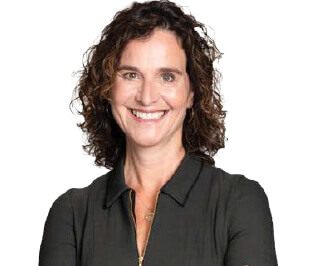Try, try again
If at first you do succeed, you’ve probably set the bar too low. You’ve got excited, in that brand awayday workshop, by your first early thoughts, by that initial outpouring of inchoate ideas.
And – partly because working on to improve is hard, and partly because criticism is banned by workshop etiquette – you’ve settled, dug in, devised more and more reasons why the one that’s down on the flipchart with all those coloured dots next to it is what success looks like. Even if, come the sobering light of tomorrow, its lustre will be a lot less obvious.
Is that what happened to the assembled marketing team at sandwich chain Pret, when it devised its new brand purpose and brand idea? Because how else do you explain its announcement this month of two verbal fragments that are not merely unremarkable but seem to have little to do with its sphere of business?
Pret’s new statement of purpose is that it ‘makes every day a little bit brighter’. Does it? Brighter? How? And even if it does, isn’t that an underwhelming and commonplace claim? And wouldn’t it be a bit more apt for, say, a paint brand?
The new tagline is ‘Makes every day’, which is a kind of pun because the business goes about its sandwich making on a quotidian basis. Nice early try, but in a teeming communications environment, is it going to stand out? Is it going to convince? Or is it going to disappear along with the umpteen other taglines that are a little bit like it?
Perhaps it’s unfair to pick on Pret, because there is an awful lot of this timid, low-bar branding out there.
In April, Accenture Song informed a waiting world that its promise is ‘Growth through relevance’. But for any brand, whether aimed at business or consumer, relevance is a baseline requirement. The alternative – irrelevance – would mean certain death.
Earlier in the year, Haleon – the consumer healthcare brand newly spun out from GSK – declared that ‘our purpose is to deliver better everyday health with humanity…’, and went on a bit from there, in similarly deadening prose.
Meanwhile, back at the now pharmaceutical-focused GSK itself, brand implementation lead Georgie Wiltshire announced this month it had crystallised its brand purpose as ‘Ahead together’. If this was the best of the options on that flipchart, what can the rejects have looked like?
 What’s discombobulating for me about Pret, though, is that it is a brand I happen to like. Something about the combination of inventiveness, convenience and the camaraderie of the people who work there – even if I occasionally get bill shock these days. And yet, with its passionless, ‘every day’ vernacular, Pret seems to have a lower opinion of Pret than I do.
What’s discombobulating for me about Pret, though, is that it is a brand I happen to like. Something about the combination of inventiveness, convenience and the camaraderie of the people who work there – even if I occasionally get bill shock these days. And yet, with its passionless, ‘every day’ vernacular, Pret seems to have a lower opinion of Pret than I do.
It’s easy enough to criticise, of course, but those of us who spend time in these brand workshops, either up front running them or as one of the invited participants, know how hard it is to get freshness of thought and expression from a fuzzily focused, multidisciplinary troupe. There is something about the very setting and the absurd rules that militates against genuine ideas.
So, switching to supportive mode now, I offer, for what it is worth, some thoughts on techniques that I have seen work in practice over the years.
No improvement without pain
The surest path to originality when brand teams come together is to insist on that most basic and yet most cruel of idea-generation techniques. To go again. And again. And again. To iterate, to answer the same question so many times and in so many ways that, by the end of it, everyone is somewhere between exhaustion and rage.
But how do you even attempt that when teams have fallen in love with their first idea, when they are goofily smitten by their own creation? You use the classic creative director’s imperative: ‘Pin it up on the wall. It won’t walk away. By the deadline, it will still be there for you. In the meantime, try and beat it. If you don’t, it will still be on that wall. But what if you do?’
Teams will still recoil because digging deeper is to experience pain. It’s hard, hard, hard. So, here’s another technique to try. Make it harder still. There are two proven ways to come at this.
The first is to recognise the magic of constraint. Ban key words. Like ‘key’, for example. And ‘life’ and ‘vibrant’ and ‘together’ and all the tired terms connected with the category you happen to be in. Any candidate purpose, promise or brand idea must be totally free of them or it goes straight in the bin. You’ll be amazed how seemingly tightening the tourniquet results in a new freedom of expression.
The second technique is to imagine that when the work is unveiled there will be absolutely no explanation of it. Whatever is there will need to make sense on its own merits. It is interesting here to observe how convoluted Pret’s explanations were for its outputs. ‘Brighter’, we were told, related to the brand’s ‘generosity’, such as its communitarian practice of donating unsold items to shelters and food banks. But no-one will be on hand to explain that to customers as they wander in for a smoked salmon sandwich and wonder why it now costs £5.40.
The real point of removing the option to explain, though, is to arrive at something so lean and pure that it feels instantly and incontrovertibly right. Clarity without banality is the aim. It is a tiny landing strip surrounded by a featureless terrain of cliché and obviousness but well worth aiming for. The 1962 classic, ‘We try harder’, for Avis, rooted in the self-evident consequence of competing as the number two, is probably the most illuminating example, 60 years after its creation.
Which wasn’t in a workshop. Perhaps that’s the real problem here – the modern-day practice of gathering so many together in the name of collaboration and consensus that searing originality is all but a non-starter.
I have no way of knowing if that’s how the Pret, Accenture, Haleon and GSK work came about – but it feels like it. Too many minds settling too fast on too convenient an output. So, should you find yourself committed to the workshop route for your next branding initiative, here is a simple tip. If at first you don’t succeed, go again. And this time, lower the numbers and raise the bar.
